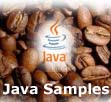| Matrices and Data Frames in R Posted: 30 Apr 2018 09:00 AM PDT In this tutorial, we’ll cover matrices and data frames. Both represent ‘rectangular’ data types, meaning that they are used to store tabular data, with rows and columns. The main difference, as you’ll see, is that matrices can only contain a single class of data, while data frames can consist of many different classes of data.  |
| Subset Vectors in R Posted: 30 Apr 2018 09:00 AM PDT In this tutorial, we’ll see how to extract elements from a vector based on some conditions that we specify. For example, we may only be interested in the first 20 elements of a vector, or only the elements that are not NA, or only those that are positive or correspond to a specific variable of interest. By the end of this tutorial, you’ll know how to handle each of these scenarios.  |
| Missing Values in R Posted: 30 Apr 2018 09:00 AM PDT Missing values play an important role in statistics and data analysis. Often, missing values must not be ignored, but rather they should be carefully studied to see if there’s an underlying pattern or cause for their missingness.  |
| Logical and Character Vectors in R Posted: 30 Apr 2018 09:00 AM PDT The simplest and most common data structure in R is the vector. Vectors come in two different flavors: atomic vectors and lists. An atomic vector contains exactly one data type, whereas a list may contain multiple data types. Numeric vectors are one type of atomic vector. Other types of atomic vectors include logical, character, integer, and complex. In this tutorial, we’ll take a closer look at logical and character vectors.  |








